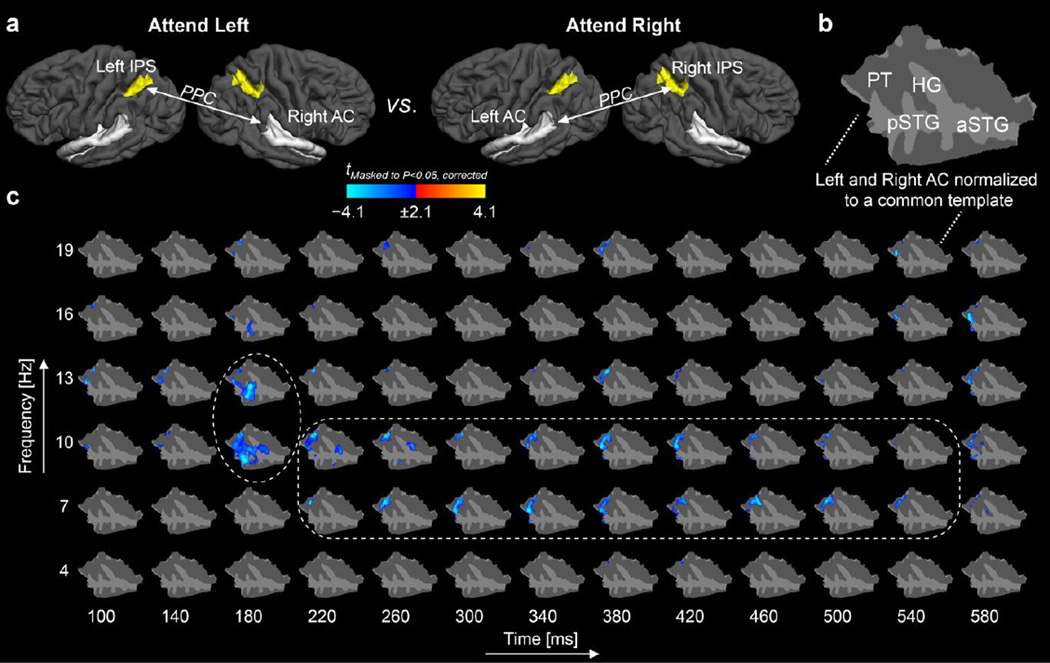Figure 3.
Cross-hemispheric phase locking between IPS seeds and AC vertex points during dichotic auditory attention. (a) A schematic illustration of the PPC comparisons. (b) The left and right AC were co-registered to a common cortical surface template. (c) Spatial TFR of evolution of PPC differences between IPS and all vertices of AC after attended post-cue non-target tones (t = 0 ms refers to the tone onset). The statistic parametric map shows that the left IPS and right AC are more weakly synchronized than the right IPS and left AC, when attention is directed to the ear contralateral to each AC. The significant differences concentrated at 10–13 Hz, i.e., at the alpha range, but spanned also to the theta (7 Hz) and lower beta (16–19 Hz) frequencies (encircled). Taken together, these data support our hypothesis that the right parietal cortex has a more global representation of the acoustic space, spanning both the contralateral and ipsilateral hemifields, than the left parietal cortex. The figure shows t values masked to locations where the PPC differences were statistically significant (P<0.05, cluster-based randomization test). Abbreviations: HG, Heschl's gyrus; PT, planum temporale; pSTG, posterior superior temporal gyrus; aSTG anterior superior temporal gyrus.

